Stocks finished higher yesterday, with a rally starting at 1 PM, as the market appeared to get a lift from the $8 billion notional delta value cover of that NDX for the QLYD ETF.
It looks like the party started a little bit before the buyback of the covered call started to have an impact. The good news is that it didn’t lead to the big market-moving rally event we saw when the buyback started in January.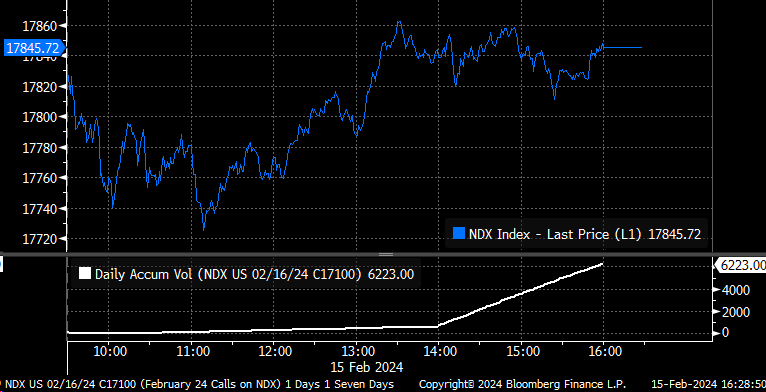
At least from the look of things, traders were either front runners of the buyback and used the liquidity from the covering of the options to get out of their positions.
Or the options flow from the calls sitting up the 5025 level on the S&P 500 were large enough to hold the entire market in place; either way, the S&P 500 stopped between 5025 and 5030, which also completed the gap fill from Tuesday’s drop.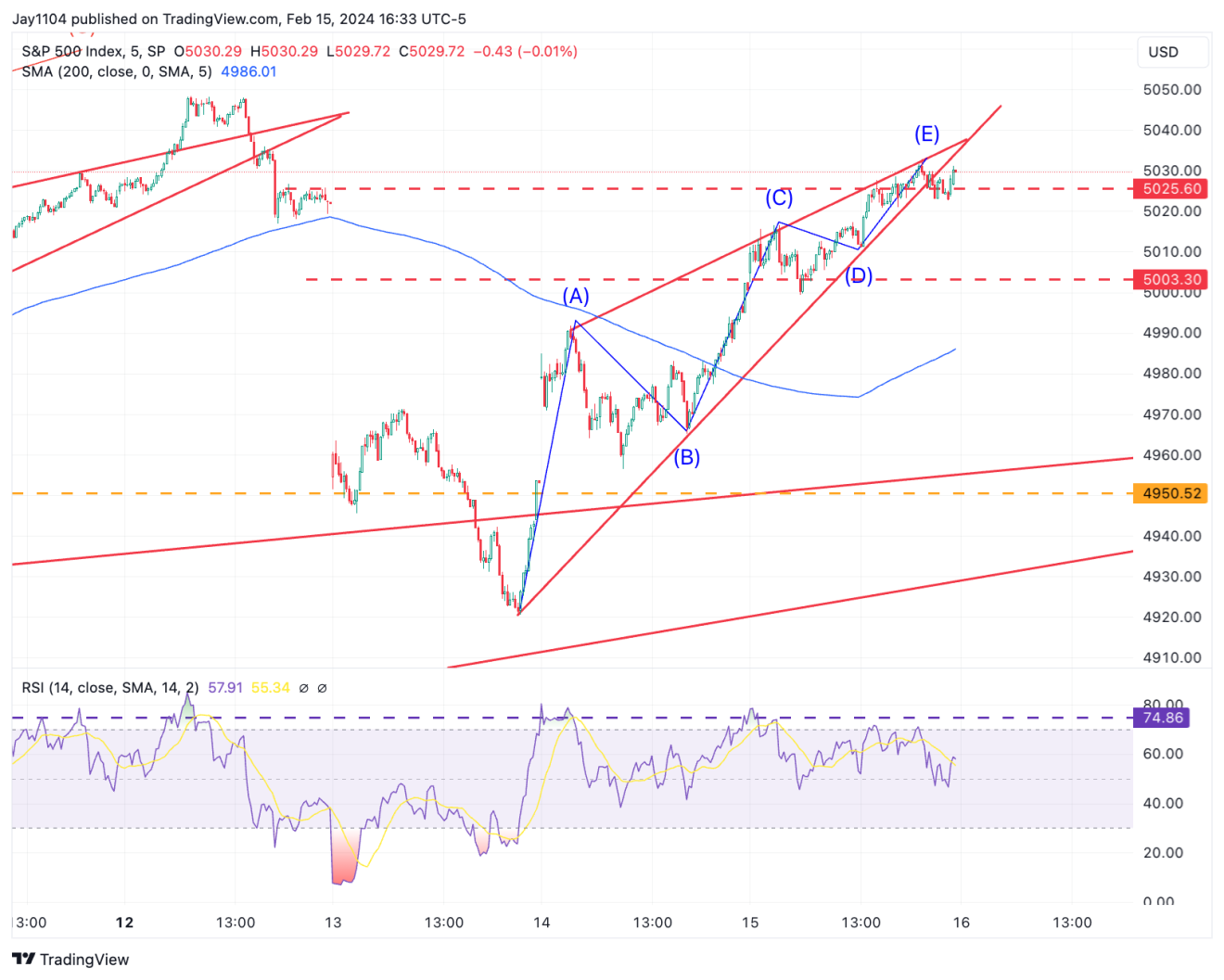
This takes us to today with the PPI report and the options expiration date.
It is anyone’s guess at this point what the PPI will be, but I think this report does matter because a hot PPI report coupled with a hot CPI report could mean that the PCE report isn’t as favorable as investors are hoping for, so we need to be watching this report a bit more.
The fact that the technical pattern for the S&P 500 held around resistance and formed what appears to be another rising wedge/diagonal triangle and filled the gap means that there is an opportunity here for the bears to take the ball back and move the index lower. But, if the index gaps higher today, then all bets are off, with the next major event not until Wednesday with Nvidia (NASDAQ:NVDA) earnings.
What was also odd yesterday was that fixed strike volatility for the S&P 500 for February 29 and March 15 was bid up.
It’s not something you typically see on an up day in the market, and the skew was clearly to the put side of the equation. So perhaps people are looking for hedges for today’s PPI report?
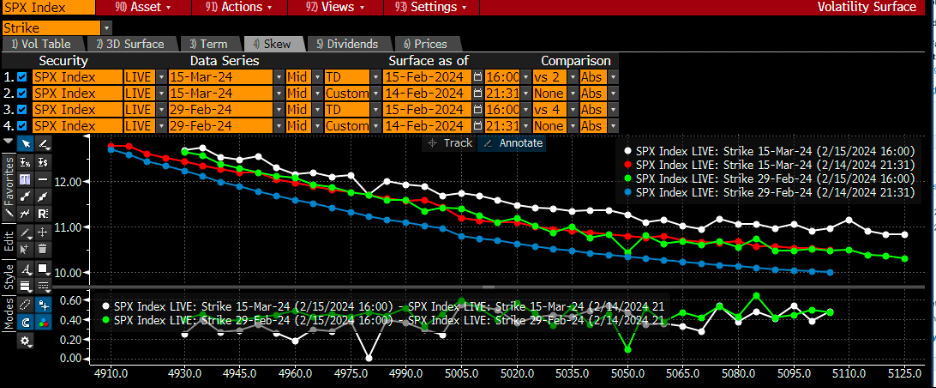
The 10-year fell yesterday by two bps but managed to hold above support at 4.18%, which needs to hold to continue to make a case for the 10-year going up.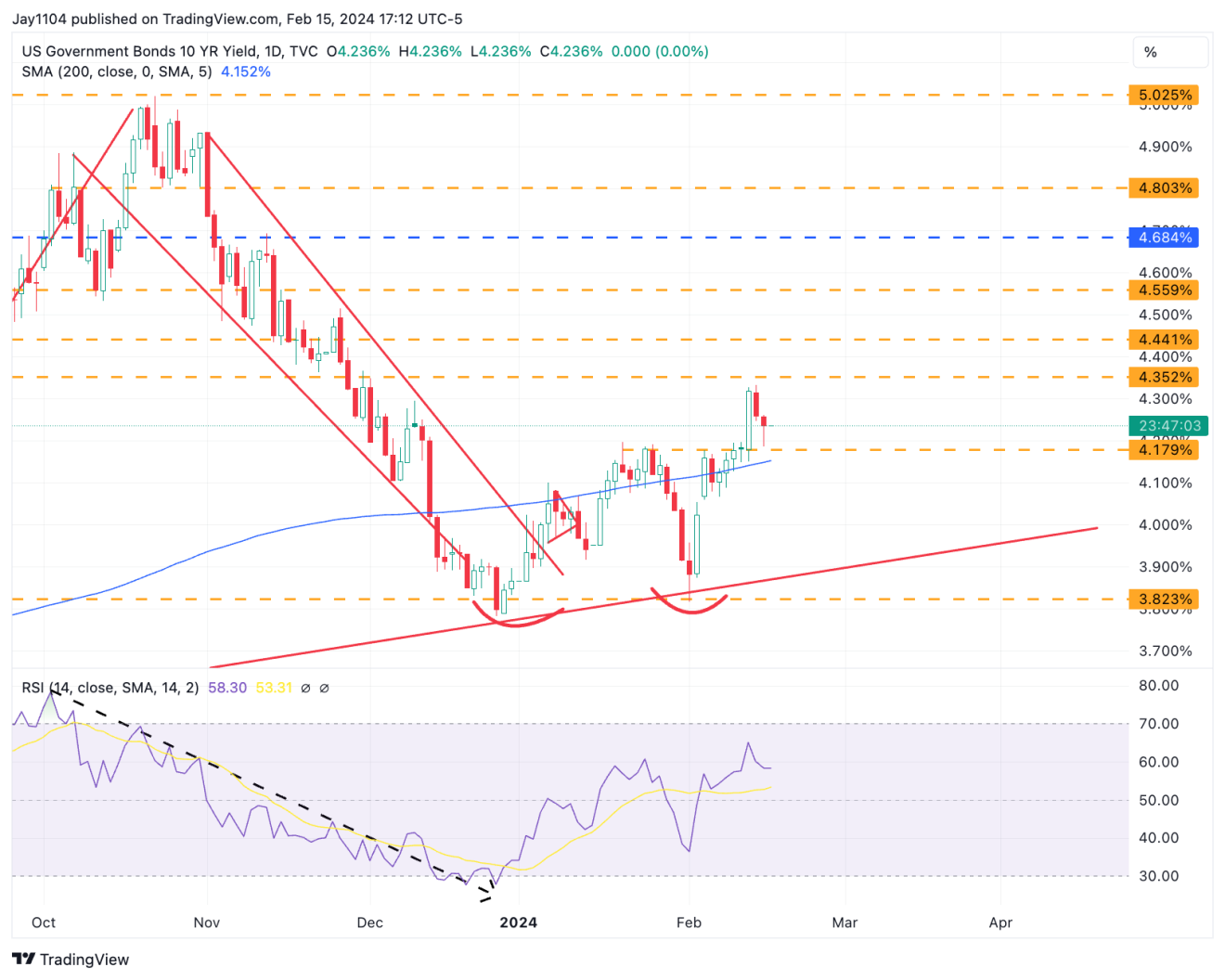
We don’t look at the fundamentals often, but I thought I would point out yesterday that the S&P 500 is now trading at 20.7 times 2024 earnings estimates. The index’s multiple has been expanding as the earnings estimates have fallen.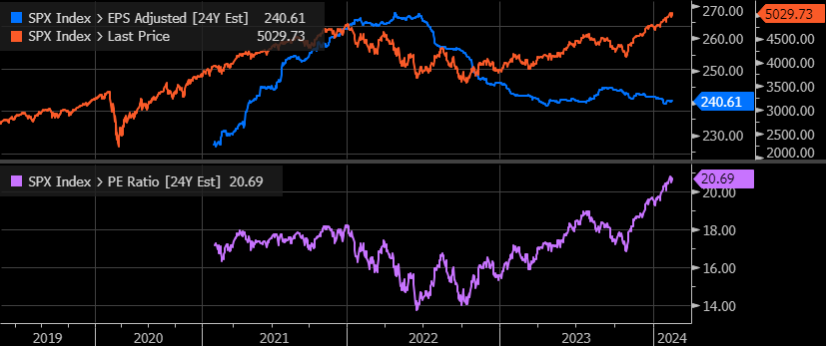
It is even more expensive when considering what that means versus bond rates, and given that the PE ratio of the S&P is 20.7, it translates to an earnings yield of 4.8%, with just 57 bps separating it from the 10-year risk-free rate.
The spread was once 4.65% in 2021, yesterday, just 57bps. That is pretty amazing.
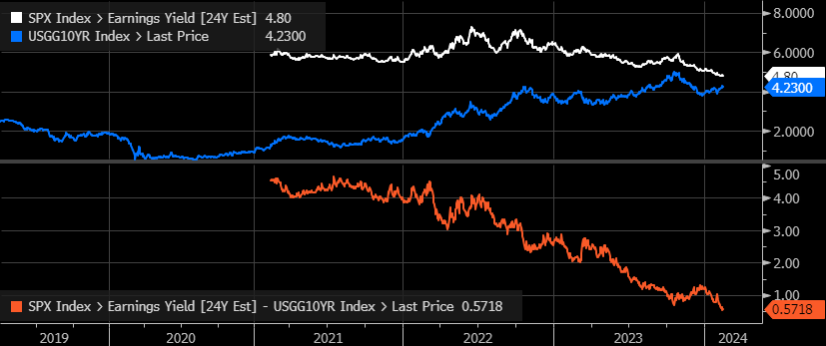
I guess what I am getting at here is that the equity risk premium in the market has gotten extremely low, and one is getting a very low level of expected market returns versus the 10-year rate in a very long time.
Another way I have found to measure this is on a Bloomberg function where they are they take the expected market return for the US, which appears to be that of the S&P 500, based on the forward internal rate of return for the earnings of stocks, which sounds a lot like the capital asset pricing model (CAPM), minus the 10-year risk-free rate, which gives you what sounds like the ERP.
It shows you the spread is just 5.2%. Now to get these values I had to use Apple (NASDAQ:AAPL) to get the country's expected returns and risk premium.
This means that from a risk-adjusted return standpoint based on the expectations for future returns, this is about as bad as it gets back to 2014.
Now, the reason the value was low in 2022 was because expected market returns were falling and because rates were rising. The reason why it is falling now is that expected market returns are just plunging. 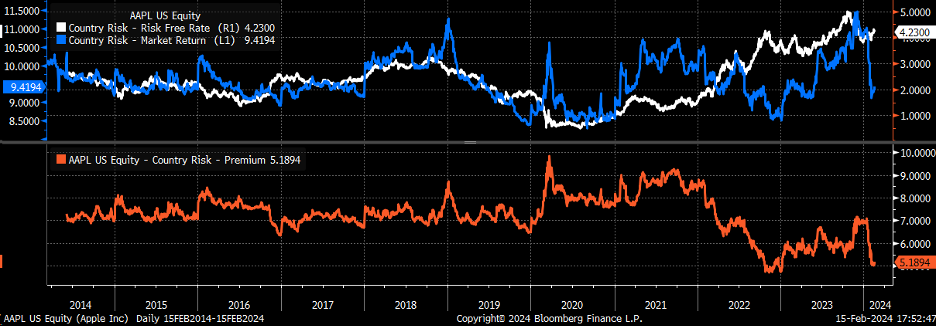
So, can the market go higher? Sure. But at some point, there will be a reversion to the mean. That means that either expected market returns will need to rise sharply or the treasury yield will need to fall sharply.
But to get that ERP to move up to, say, 7%, which appears to be average, something will need to give, and that means that reversion will not be a fun experience. But as long as you know what you are playing with good luck.
YouTube:
